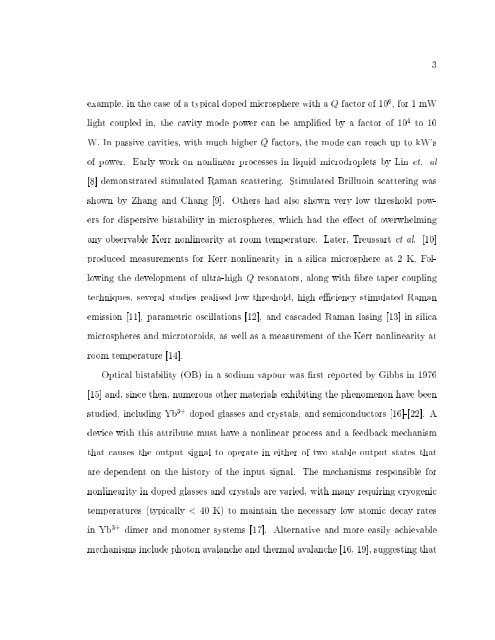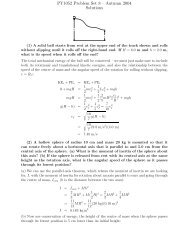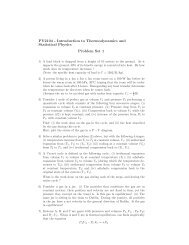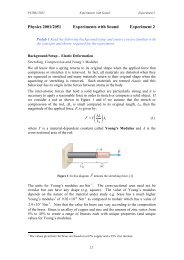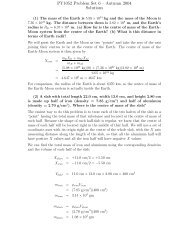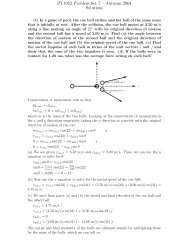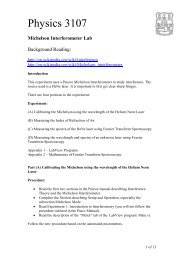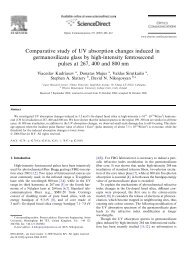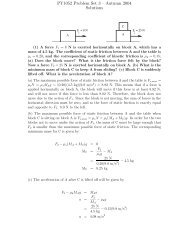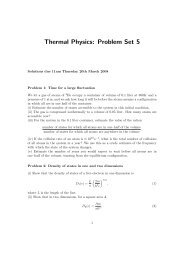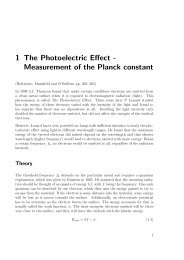optical characterisation of rare-earth doped fluoride and phosphate ...
optical characterisation of rare-earth doped fluoride and phosphate ...
optical characterisation of rare-earth doped fluoride and phosphate ...
- No tags were found...
You also want an ePaper? Increase the reach of your titles
YUMPU automatically turns print PDFs into web optimized ePapers that Google loves.
3example, in the case <strong>of</strong> a typical <strong>doped</strong> microsphere with a Q factor <strong>of</strong> 10 6 , for 1 mWlight coupled in, the cavity mode power can be amplied by a factor <strong>of</strong> 10 4 to 10W. In passive cavities, with much higher Q factors, the mode can reach up to kW's<strong>of</strong> power. Early work on nonlinear processes in liquid microdroplets by Lin et. al[8] demonstrated stimulated Raman scattering. Stimulated Brilluoin scattering wasshown by Zhang <strong>and</strong> Chang [9].Others had also shown very low threshold powersfor dispersive bistability in microspheres, which had the eect <strong>of</strong> overwhelmingany observable Kerr nonlinearity at room temperature. Later, Treussart et al. [10]produced measurements for Kerr nonlinearity in a silica microsphere at 2 K. Followingthe development <strong>of</strong> ultra-high Q resonators, along with bre taper couplingtechniques, several studies realised low threshold, high eciency stimulated Ramanemission [11], parametric oscillations [12], <strong>and</strong> cascaded Raman lasing [13] in silicamicrospheres <strong>and</strong> microtoroids, as well as a measurement <strong>of</strong> the Kerr nonlinearity atroom temperature [14].Optical bistability (OB) in a sodium vapour was rst reported by Gibbs in 1976[15] <strong>and</strong>, since then, numerous other materials exhibiting the phenomenon have beenstudied, including Yb 3+ <strong>doped</strong> glasses <strong>and</strong> crystals, <strong>and</strong> semiconductors [16]-[22]. Adevice with this attribute must have a nonlinear process <strong>and</strong> a feedback mechanismthat causes the output signal to operate in either <strong>of</strong> two stable output states thatare dependent on the history <strong>of</strong> the input signal. The mechanisms responsible fornonlinearity in <strong>doped</strong> glasses <strong>and</strong> crystals are varied, with many requiring cryogenictemperatures (typically < 40 K) to maintain the necessary low atomic decay ratesin Yb 3+dimer <strong>and</strong> monomer systems [17]. Alternative <strong>and</strong> more easily achievablemechanisms include photon avalanche <strong>and</strong> thermal avalanche [16, 19], suggesting that


